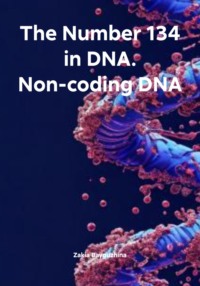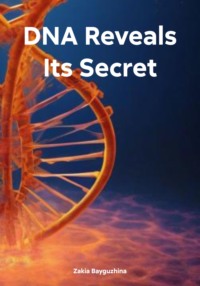
Полная версия
DNA and Cancer

Zakia Bayguzhina
DNA and Cancer
Everything is simple when you know how to do it.
Genghis Khan
Cancer… This disease scares those who are diagnosed with it. It sounds threatening, like a sentence, although currently some forms of cancer are already being successfully treated, but this disease is still not fully understood. Therefore, the question arises: why does this disease choose some, but bypasses others?
They say that when you know the reason for a particular action, you are already halfway victorious.
If the etiology of this disease is revealed, then we have already won by 50%. It remains to find another 50% to the complete victory, that is, to develop new, successful methods of treatment, to find simple painless methods of diagnosis, to master preventive measures to combat cancer and other malignant neoplasms.
There are several hypotheses for the development of this disease, and they all boil down to incomprehensible changes occurring in DNA – deoxyribonucleic acid, as a result of which this molecule from a normally functioning one begins to double uncontrollably, and, accordingly, the number of modified cells increases. As a result, a tumor is formed.
These scientifically developed hypotheses are united by a hidden, invisible thread – changes in DNA. But which ones?..
The best research institute is nature itself! She finds reasonable, simple ways to solve her problems. Nature is wise, economical and considers its steps, so it knows how it should be.
Such is and the structure of DNA – the carrier of life.
The structure of the DNA molecule is well known, thanks to Francis Crick (1916-2004) and James Dewey Watson (born 1928), who published an article on the spatial structure of DNA in the journal Nature on April 25, 1953.
Various types of DNA are currently known. But we are interested in the double-stranded B-form.
The structure of DNA is as follows: two antiparallel polynucleotide chains are twisted about the axis. On the periphery of the molecule there are carbohydrate-phosphate chains, inside – nitrogen-containing heterocycles. DNA contains four nitrogenous bases: purine – adenine and guanine and pyrimidine – thymine and cytosine. But there are exceptions, for example, some viruses have another pyrimidine derivative – uracil. The nitrogenous bases of one antiparallel chain are connected to a specific base of the other chain, observing Chargaff's rule: adenine combines with thymine, guanine with cytosine. This arrangement is called complementary. Pairing of nitrogenous bases is carried out using hydrogen bonds.
Scheme of arrangement of complementary nitrogenous bases in DNA.

There is another regularity in this molecule that has remained unknown until now. This is RM.
You can see some numbers on the scheme. These numbers show the sum of the electrons of each nitrogenous base included in the DNA. In adenine, the total number of electrons is 69, in thymine – 65, in the other pair guanine contains 77 electrons, cytosine – 57.
After addition, in accordance with the location of nitrogenous bases in complementary pairs, we get the following results:
adenine + thymine = 69 + 65 = 134
guanine + cytosine = 77 + 57 = 134
The total number of electrons in the complementary planes of DNA is 134.
Numbers have truthful laws. They do not carry away in invented ideas, hypotheses. The numbers put everything in its place.
Conclusion:
Following Coulomb's law, equal electrostatic repulsive forces act between complementary pairs of nitrogenous bases in a DNA molecule.
"The number 134" gives stability to the molecule by evenly twisting the DNA along its axis to weaken the electrostatic repulsive forces.:
F ’= F”… = Fⁿ
When cytosine is methylated, a methyl group (—CH₃) from the acceptor of S-adenosylmethionine is added to cytosine, this process is catalyzed by methyltransferase, the number of electrons increases, DNA is twisted more strongly as a result of electrostatic forces (F).
Конец ознакомительного фрагмента.
Текст предоставлен ООО «Литрес».
Прочитайте эту книгу целиком, купив полную легальную версию на Литрес.
Безопасно оплатить книгу можно банковской картой Visa, MasterCard, Maestro, со счета мобильного телефона, с платежного терминала, в салоне МТС или Связной, через PayPal, WebMoney, Яндекс.Деньги, QIWI Кошелек, бонусными картами или другим удобным Вам способом.






